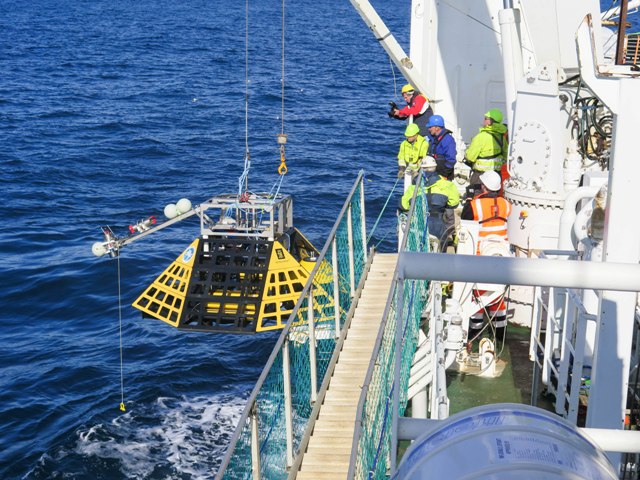Sep 2 2015
Mysteries still abound about methane release from the ocean floor. Two state of the art observatories have been deployed offshore Svalbard this summer, to try and unveil the secrets of natural release of the climate gas.
 The launcher was deployed from RV Helmer Hanssen in July. Photo: A. Silyakova.
The launcher was deployed from RV Helmer Hanssen in July. Photo: A. Silyakova.
It is not only the space agencies that launch landers to far away places. Marine science institutions have a lot of unknown ground to cover in their quest for knowledge. Also they are depending on groundbreaking lander and sensor technology to lead them to that knowledge.
Centre for Arctic Gas Hydrate, Environment and Climate (CAGE) recently deployed two observatories on the site of the methane seeps in the Arctic Ocean. Kongsberg Maritime built the observatories that are now comfortably placed on the ocean floor in two locations offshore Svalbard. These are the sites where flares of gas bubbles have been observed, indicating release of methane gas to the water column. The observatories are placed at the depth of 90 meters and 240 meters respectively.
“The launch went perfectly,” says chief scientist on the cruise, Dr. Anna Silyakova.
Methane is a potent climate gas that can amplify the global warming if released into the atmosphere. However, there is still a lot to be learned about the release of methane from the ocean floor, and what happens to it in the water column. Does it get dispersed with the currents? Do bacteria consume it? Or is it released in the atmosphere?
The observatories include several instruments which will monitor methane release from the seabed to the water column as well as CO2, ocean acidification and circulation. The data from these observatories will provide knowledge that will help understand processes related to climate change. The observatories will stay put in their locations, collecting crucial data for a full year.